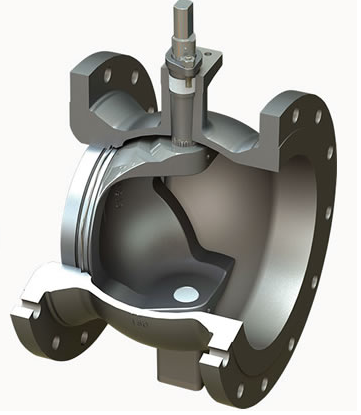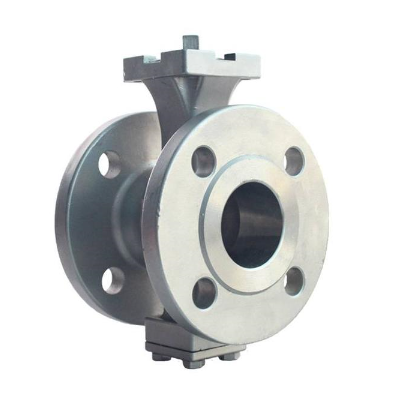 info@shxvalve.com
info@shxvalve.com info@shxvalve.com
info@shxvalve.comTel:+86-17717520739


Email:info@shxvalve.com
Address: NO.720, Suide Road, Jiading District,Shanghai, China.
2022-09-22
What is a segmented ball valve?
A segmented ball valve is a type of ball valve with a V-notch contour segment in the ball. Segmented ball valves are control valves that have good control, rangeability, and shutoff capability. This valve is capable of producing high capacity and non-clogging flow control. Segmented ball valve manufacturers design the ball with special contours to enhance capacity and shutoff integrity and seal life. Segmented ball valve is known to be economical and of high performance. These valves can be of a wide variety such as from small and lightweight valves to large heavyweight valves. The lightweight segmented ball valve is easy to mount and handle. The heavy-weight segmented ball valve is used in harsh environments to deliver optimized control and for on/off applications. Due to such features, segment ball valves find use in many industries such as paper and pulp industries, refinery, and petrochemical services among others. These valves are durable and reliable even when used in harsh environments.

Figure: Segmented Ball Valve
Components of segmented ball valve
Some of the main components of segmented ball valve are:
Valve housing
This is the component that is used to house all internal components of the segmented ball valve. This part is made using rigid and hard materials, thermoplastic lined metallic materials, or thermoplastics to protect components of the valve. This part also allows for the external components to access the controlling mechanism to rotate the ball thus opening or closing the flow.
Segment ball
This is a V-shaped contoured ball. This segmented ball has is used as the opening for the fluid to flow. The segment ball provides shear action to produce flow characteristics.
Shafts
The shafts are used to connect the segmented ball valve control mechanism to rotate the segmented ball. The shafts are made with packing rings and O-rings that help to seal the shaft as well as a bonnet to prevent leakage. The shaft can be operated manually, using a pneumatic or electric actuator.
Seat
The seat is used to provide sealing between the segmented ball valve body and segment ball.
Bearing seals
These seals protect metallic bearings from fluid ingress.
How does a segmented ball valve work?
A segmented ball valve is a quarter-turn ball valve. It operates similarly to an eccentric plug valve. The valve has shafts that help to enlarge the center flow path. A driving shaft connects to one side of the ball and a follower shaft connects to the opposite side. When the driving shaft rotates, the segmented ball rotates exposing the flow path via the V-notch. The use of V-notch enhances a large range of fluid flow because of a small area of flow at low travel and maximum travel allows a large flow area. Segment ball valves can have two end connections for the body that is the flanged and flangeless connections.
Types of segmented ball valve
Side entry segmented ball valve
The side entry segmented ball valve is a valve of high performance. This valve is made based on the O type of ball valve. Side entry ball valve helps to convey solid-gas and solid-liquid two-phase medium. This means that this valve can control the flow of solids and liquids or gases and solids conveniently.
Features of side entry segmented ball valve is:

Figure: Side entry segmented ball valve
Top entry segmented ball valve
The top entry segmented ball valve is a valve suitable for use in pharmaceutical, chemical, and food processing where excellent and fast cleaning is needed. This segmented ball valve has certain advantages which make it preferred in industries that need clean products such as:
Features of segmented ball valve
Integrated valve body
Segment ball valve manufacturers design the valves in a one-piece body. This helps to provide greater rigidity against fluctuations in pipe loads. These valves have a side entry structure that enhances rigidity and makes it hard for leakage and deformation despite high stress due to fluid and closing torque.
Segment ball
Segmented ball valve manufacturers make the valve with a V-port segment ball. This helps to provide a wide range of abilities to control fluid flow. This makes the valve suitable for throttling applications with high consistency and syrup services. The segment is designed so that it can provide optimum flow and its hard-coated spherical face prevents galling.
Self-lubricated bearing
A segmented ball valve designs employ double bearings on the lower and upper valve stems to provide good stability. This makes the contact surface with stem bigger and enhances low coefficient of friction and high carrying capacity as well as reduce operating torque.
Soft and metal sealing seat
Segmented ball valve manufacturers make the valves with either PTFE or metallic seats. The material depends on the intended medium of flow. Metal seats sealing faces are overlaid with hard and strong alloy while the surface of the ball is hardened using hard chromium plated, plasma nitriding among others. This helps to enhance the service life of the sealing face as well as improve temperature resistance. Seats made of PTFE or RPTFE have excellent seal performance, have good resistance to corrosion, and are of wide applications.
Economical practicality
Segmented ball valve manufacturers aim to make these valves as lightweight as possible and of small stem torque. Such critical design parameters make the valve be installed with small electric or pneumatic actuators, and be cost-effective relative to small size or other class of regulating valves.
Selection of segmented ball valve
Type of operation
This is the case where one is supposed to decide the type of mechanism to power the actuator. The actuator can be manual, pneumatic or electric. The actuator type depends on the power source available for example, electricity or compressed air as well as required torque. Pneumatic actuators provide high torque values while the electric actuators have a high initial cost but their operating cost is lower relative to pneumatic ones.
Housing material
The segmented ball valve should be such that the material used to make the housing is compatible with the media being controlled. Different materials have different properties such as:
Brass is suitable for non-corrosive and neutral media, durable, resists high temperatures, not suitable for salty water, acids and chlorides.
Stainless steel is resistant to chemicals, abrasion-resistant, resistant to high temperatures, but not good to chlorides, hydrochloric acids, bleach, and bromine.
PVC material is good for corrosive fluids like acids, salty water, bases, and organic solvents. However, it is not resistant to chlorinated and aromatic hydrocarbons. PVC temperature and pressure resistance are lower relative to that of brass and stainless steel.
Pressure rating
The segmented ball valve selected should be able to withstand maximum and minimum fluid pressure during operation. The pressure rating of the segment ball valve will be determined by the material used to make the housing. Strong materials like stainless steel can withstand high pressure compared to PVC material.
Working temperatures
Different segmented ball valve materials can withstand different levels of temperature from minimum to maximum values. The temperature range of the segment ball valve is determined by the seal and housing material. Brass material can withstand temperatures in the range 20°C to 60°C, stainless steel material can withstand temperatures in the range of -40°C to 220°C, while PVC segmented ball valve can withstand temperatures between -10°C to 60°C.
Standards and approvals
Depending on the use of the segmented ball valve, the valve manufacturers may need to follow certain standards from regulatory bodies. This is often required for valves to be used in drinking water, food products, pharmaceuticals, or gas.
Segmented ball valve actuators
The segmented ball valve can use different types of actuators to open and close. The types of actuators that can be used by these valves include manual, pneumatic actuators, and electric actuators.
Manual segmented ball valve actuator
This is a segmented ball valve actuator that is powered by a human hand. This type of actuator has a handle where the operator applies torque to turn the handle and thus turn the valve mechanism to open or close the valve.
Rack and pinion pneumatic actuator
Rack and pinion pneumatic actuators are actuators used in segment ball valves for opening, turning, and closing the valve as it may be needed. These actuators convert the energy of compressed air by using pneumatic cylinders to oscillating rotary motion. These actuators require dry, clean, and processes gas to provide by a central compressed air station.
Electric actuator
These actuators are used in segment ball valves to control the closing and opening of the valve. These actuators can provide rotary or linear motion. As the name suggests, these actuators use electricity to enhance their work. The torque to open/close the valve is transmitted using a shaft to open or close the valve.
Applications of segmented ball valve
Advantages of segmented ball valve
Disadvantages of segmented ball valve
Troubleshooting segmented ball valve
Gland packing leakage
Leakage on the bottom plate gasket
Through bore leaking fluid
High segmented ball valve torque
Segmented ball valve features
A segmented ball valve is a ball valve that makes a quarter turn to open/close the fluid flow. This valve has a hollow spherical ball segment supported by bearing and shaft at the actuator side of the valve. The other end of this valve has a bearing and a post. The segmented ball rotates about a pivot to make a continuous single upstream seal in a closed position. The seal of this segment ball valve is obtained through a flexible elastomer or flexible seat ring that presses against the spherical segment. Segmented ball valve body is made of strong materials mostly stainless steel with flangeless or flanged construction.
Segmented ball valves can be classified as side entry segment ball valves and top entry segmented ball valves. These valves employ a design and technology that helps them to work even in viscous fluids and slurries. These valves are used in many industries such as petrochemical, pharmaceutical, food processing, sewage treatment, chemical processing among others. The segmented ball valve has many applications due to their superb features such as ease of cleaning, ease of repair and maintenance, simple design, small size and weight, corrosion resistance, and high strength to stand slurries. Important parameters to consider when purchasing a segment ball valve are actuator type, pressure rating, working temperatures, housing materials, standards and approvals.
